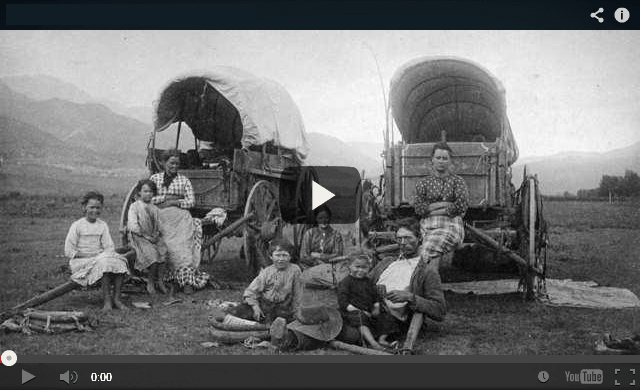Learning basic home canning methods can give you a lifetime of independence and self sufficiency. Canning food yourself can reduce your food budget, and provide your family with a healthy alternative to fast foods. Canned food for the most part IS fast food. You can open a jar of vegetables, meat, soup or stew, pour the contents in a pan, warm it up on the stove, and it’s ready to eat. No thawing, no muss, no fuss.
Canning potatoes is an easy way to preserve this staple food for long term storage.
Have you ever grown potatoes in your garden and wound up with more than you know what to do with?
Have you ever seen potatoes sold in bulk and on sale at the grocery? and wished you could take advantage of the low prices?
I’ve seen 50 pound boxes of potatoes on sale for $18.00. That works out to about 3.6 cents a pound. 50 pounds of potatoes will last the average family a LONG time, and probably would go bad before they were all finished. You can extend the life of bulk potatoes by canning them. 50 pounds of potatoes will fill about 28 quart sized canning jars.
Potatoes keep very well in cool, dark storage for a few months, but will lose moisture and shrivel if you can’t maintain a relatively high humidity in the storage area. Unless you have a root cellar, this is tough to do. The simple solution to this is to can your potatoes instead. Canned potatoes will keep for several years, and can be used in many of the same ways you would use fresh ones.
Originally published : food-skills-for-self-sufficiency.com
Canning Potatoes – The Prep Work
Start by washing off any remaining residue from your potatoes. Remove roots, soil, etc.

Then, using a potato peeler, remove the skin and cut away any bad places.
Potatoes can turn brown if exposed to the air for very long. This doesn’t affect their flavor, but it does make them look less appealing. You can avoid this by placing peeled potatoes in water.
Warm (nearly hot) water is best, because this will also start warming them up for canning.
At this time, you should put on a large pan of water and begin bringing it to a boil. Also put canning lids (dome lids) in a small pan of water and bring them to a boil.

Once all your potatoes are peeled, they need to be cut up to fit in the canning jars. I like to cut them into roughly one inch cubes. You can cut them up into what ever size you want as long as they fit into the canning jars. As you cut them up, return the pieces to the warm water.
Canning Potatoes:
Filling and Closing the Jars

Fill your canning jars with the cut up potatoes, shake them down to help pack them in tighter.

Add 1 teaspoon of canning salt to quarts or 1/2 teaspoon to pints.

Fill canning jars with boiling water, leaving 1 inch headspace.Apply 2 piece rings and lids & screw down hand tight.
Canning Potatoes:
The Canning Process

Place closed canning jars of potatoes in the pressure canner as soon as the water is near boiling.
My Presto 23 quart pressure canner will hold 7 quarts (single stacked) or 18 pints (double stacked) at a time. It’s a good idea to know in advance how many pints or quarts your canner will hold, so you’ll know about how many potatoes to prepare.
Process at 10 PSI – quarts for 90 minutes, pints for 70 minutes.
Once done, and pressure has fallen off naturally, remove jars from the canner and allow them to cool to room temperature. After the jars have cooled, check to see that each jar has sealed. It’s rare for jars to not seal, but it does happen occasionally. Any that have not sealed, can be refrigerated and eaten within a couple of weeks.

Always be sure to label your canning jars with what you have put in them, and the date that they were canned. This allows you to tap into your stores of canned food using the oldest inventory first.
Using Canned Potatoes
Canned Potatoes can be used in most ways you would use fresh ones. Only difference is that they’re quicker to prepare.
Here just a couple of ideas:
-Dump, drain and rinse canned potatoes, and brown them in a skillet.
-Dump, drain and rinse canned potatoes, heat them in a pan just covered with water, simmer for 10 minutes, drain, add milk and butter, whip with an electric mixer – presto you have mashed potatoes!
-Add drained canned potatoes to soups, stews and chowders that call for fresh potatoes – just add them later in the cooking process.
Canning potatoes is a useful and relatively easy skill that will help you to preserve this valuable staple food for long term storage. Prepared this way, they can be stored and used for several years. It’s just one more skill in your arsenal for self sufficiency.
24 Lost Gardening Tips from 100 Years Ago
Canning Sweet Potatoes
If you have the equipment, pressure canning sweet potatoes (or yams) is a fairly easy task. Whether you have a bumper crop from your garden, or buy them cheap at the grocery of farmer’s market, you can extend their storage life by canning them.
If you plan on storing fresh sweet potatoes, you should know that they keep very well in cool storage. The bigger they are, the longer they will keep. Large sweet potatoes stored in cool and darkness will keep well over a year. Smaller ones will lose their moisture in storage much more quickly, so won’t keep nearly as long.
When I harvest sweet potatoes from my garden, they come in all sizes, so to prevent them from going bad, I’ll can the smaller ones for use later. Larger potatoes keep longer in cold storage, and can be eaten first.
Harvesting will inevitably result in a few damaged but edible potatoes as well. Those sweet potatoes that have stab wounds from the potato fork, are broken in half, or damaged in some other manner are more susceptible to drying out or even rotting in storage, so they will also get canned.
The Best Way to Grow Sweet Potato in Straw Bales, Bags and Containers
Grow Sweet Potatoes — Even in the North
Canning Sweet Potatoes – The Prep Work

Start by washing off any garden residue from your sweet potatoes. remove roots, soil, etc.

Then, using a potato peeler, remove the skin and cut away any bad places.

Sweet potatoes will turn brown if exposed to the air for long. This doesn’t affect their flavor, but it does make them look less appealing. You can avoid this by placing peeled potatoes in water. Warm (nearly hot) water is best, because this will also start warming them up for canning.
Right about this point, you should put on a large pan of water and begin bringing it to a boil.

Once all sweet potatoes are peeled, they need to be cut up to fit in the canning jars. I like to cut them into 1/4 to 1/2 inch thick slices. You can cut them up into what ever size you want as long as they fit into the canning jars.

As you cut them up, return the pieces to the warm water bath to keep them from turning brown.
Canning Sweet Potatoes:
Filling and Closing Jars

Fill your canning jars with the cut up sweet potatoes, shake them down to help pack them in. They will shrink some during canning, so pack them tight.

Add 1 teaspoon of canning salt to quarts or 1/2 teaspoon to pints.

Fill canning jars with boiling water, leaving 1 inch headspace.
Finally – apply rings and lids. Screw them down hand tight.
Canning Sweet Potatoes:
The Canning Process

Place closed canning jars of sweet potatoes in the pressure canner as soon as the water is near boiling.
My Presto 23 quart pressure canner will hold 7 quarts (single stacked) or 18 pints (double stacked) at a time.
It’s a good idea to know in advance how many pints or quarts your canner will hold, so you’ll know about how many sweet potatoes to prepare for a “batch”.
Process at 10 PSI – quarts for 90 minutes, pints for 70 minutes.
Once done, and pressure has fallen off naturally, remove jars from the canner and allow them to cool to room temperature.

Canning jars may leak some liquid during canning. Since sweet potatoes are so high in sugar, the jars may be sticky after they are removed from the canner, so you may have to wipe down the outside of the jars and lids before storing them.
Using Canned Sweet Potatoes
Canned Sweet Potatoes can be used in most ways you would use fresh ones. Only difference is that they’re quicker to prepare.
One of my favorite ways to prepare sweet potatoes is to slice them about 1/4 to 1/2 inch thick and place them in a no stick skillet, cover them with milk, add 4 or 5 tabelspoons of sugar, and a little salt to taste.
Heat to a simmer and cook untl the potatoes are soft and the milk/sugar mixture has thickened and reduced by about 1/3 to 1/2.
If you use canned sweet potatoes, make the milk and sugar mixture first, then add drained sweet potatoes to the skillet just long enough to get them coated with the milk and to heat them up.
Sweet potato pie can also be made using canned sweet potatoes, since you would have to cook and mash fresh sweet potatoes anyway.
Canning sweet potatoes is an effective way to preserve them for long term storage. Prepared this way, they can be stored and used for several years. Remember – Your garden may not be as productive next year, so take advantage of bumper crops when they come. It’s just one more skill in your arsenal for self sufficiency. (source)
Our grandfathers had more knowledge than any of us today and thrived even when modern conveniences were not available. They were able to produce and store their food for long periods of time. The Lost Ways is the most comprehensive book available. All the knowledge our grandfathers had, in one place.Here’s just a glimpse of what you’ll find in the book:
Table Of Contents:
Making Your Own Beverages: Beer to Stronger Stuff
Ginger Beer: Making Soda the Old Fashioned Way
How North American Indians and Early Pioneers Made Pemmican
Wild West Guns for SHTF and a Guide to Rolling Your Own Ammo
How Our Forefathers Built Their Sawmills, Grain Mills,and Stamping Mills
How Our Ancestors Made Herbal Poultice to Heal Their Wounds
What Our Ancestors Were Foraging For? or How to Wildcraft Your Table
How North California Native Americans Built Their Semi-subterranean Roundhouses
Our Ancestors’Guide to Root Cellars
Good Old Fashioned Cooking on an Open Flame
Learning from Our Ancestors How to Preserve Water
Learning from Our Ancestors How to Take Care of Our Hygiene When There Isn’t Anything to Buy
How and Why I Prefer to Make Soap with Modern Ingredients
Temporarily Installing a Wood-Burning Stove during Emergencies
Making Traditional and Survival Bark Bread…….
Trapping in Winter for Beaver and Muskrat Just like Our Forefathers Did
How to Make a Smokehouse and Smoke Fish
Survival Lessons From The Donner Party
Get your paperback copy HERE
Books can be your best pre-collapse investment.
The Lost Ways (Learn the long forgotten secrets that helped our forefathers survive famines,wars,economic crisis and anything else life threw at them)
Survival MD (Best Post Collapse First Aid Survival Guide Ever)
Conquering the coming collapse (Financial advice and preparedness )
Liberty Generator (Build and make your own energy source)
Backyard Liberty (Easy and cheap DIY Aquaponic system to grow your organic and living food bank)
Bullet Proof Home (A Prepper’s Guide in Safeguarding a Home )
Family Self Defense (Best Self Defense Strategies For You And Your Family)
Survive Any Crisis (Best Items To Hoard For A Long Term Crisis)
Survive The End Days (Biggest Cover Up Of Our President)
Drought USA (Discover The Amazing Device That Turns Air Into Water)




